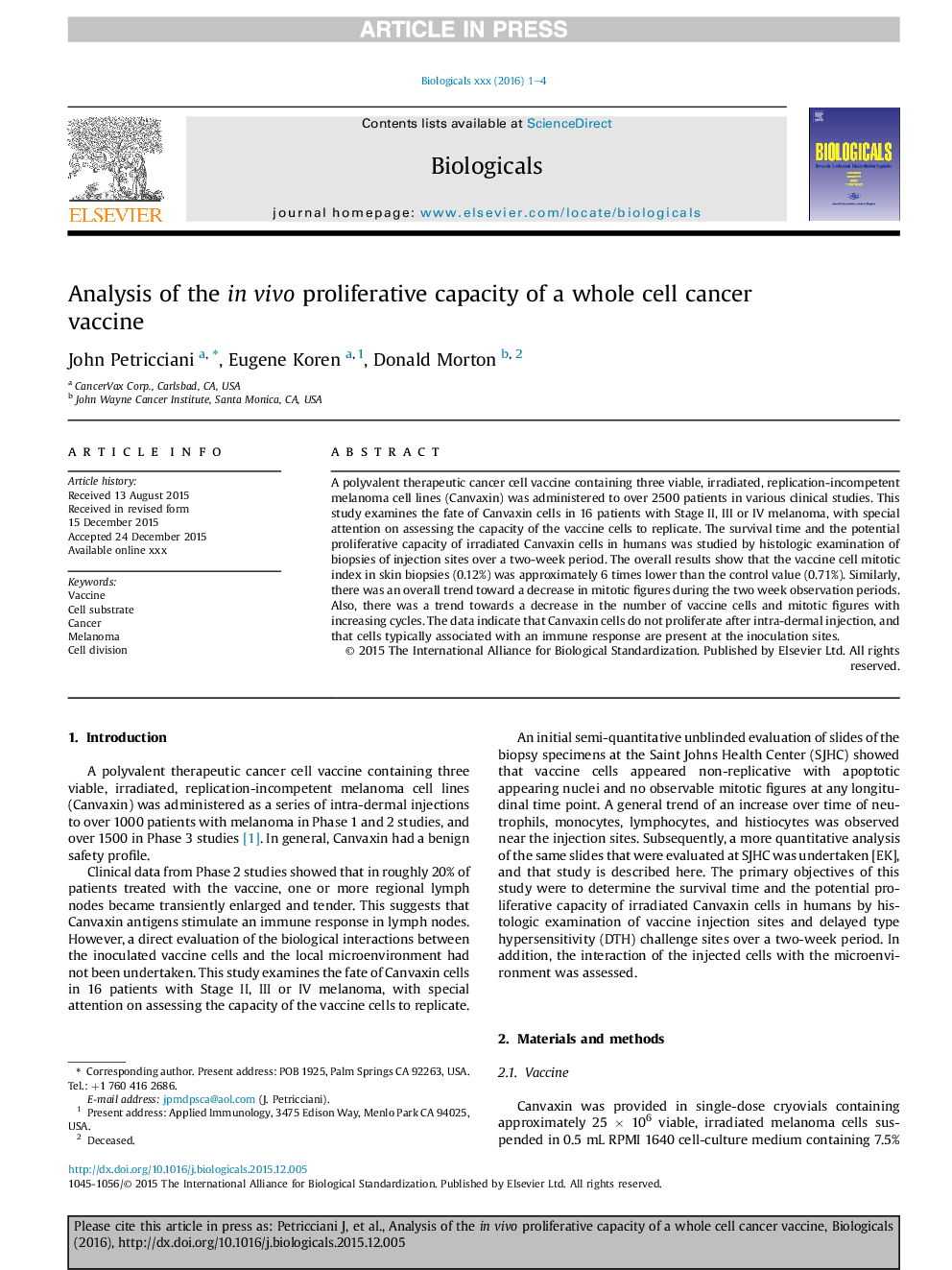| Article ID | Journal | Published Year | Pages | File Type |
|---|---|---|---|---|
| 10852522 | Biologicals | 2016 | 4 Pages |
Abstract
A polyvalent therapeutic cancer cell vaccine containing three viable, irradiated, replication-incompetent melanoma cell lines (Canvaxin) was administered to over 2500 patients in various clinical studies. This study examines the fate of Canvaxin cells in 16 patients with Stage II, III or IV melanoma, with special attention on assessing the capacity of the vaccine cells to replicate. The survival time and the potential proliferative capacity of irradiated Canvaxin cells in humans was studied by histologic examination of biopsies of injection sites over a two-week period. The overall results show that the vaccine cell mitotic index in skin biopsies (0.12%) was approximately 6 times lower than the control value (0.71%). Similarly, there was an overall trend toward a decrease in mitotic figures during the two week observation periods. Also, there was a trend towards a decrease in the number of vaccine cells and mitotic figures with increasing cycles. The data indicate that Canvaxin cells do not proliferate after intra-dermal injection, and that cells typically associated with an immune response are present at the inoculation sites.
Related Topics
Life Sciences
Biochemistry, Genetics and Molecular Biology
Biochemistry, Genetics and Molecular Biology (General)
Authors
John Petricciani, Eugene Koren, Donald Morton,
